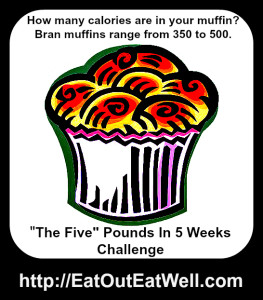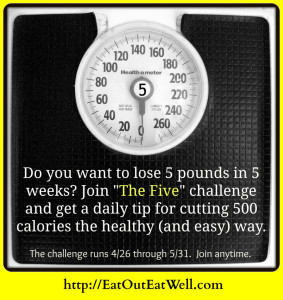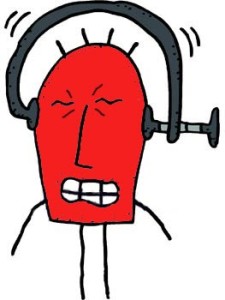 Tip 2 of “The Five” Pounds in 5 Weeks challenge:
Tip 2 of “The Five” Pounds in 5 Weeks challenge:
Think about skipping the bran muffin at breakfast. Bran muffins are often thought of as “healthy”– probably because they have the word bran in their name. But they’re made with a lot of sugar and fat.
In general, a 4 ounce bran muffin has around 350 calories – but, have you seen the size of muffins? A Dunkin’ Donuts Honey Bran Raisin Muffin has 480 calories with 15 grams of fat and 79 grams of carbs. It does, however, have 5 grams of fiber.
If you really crave one, eat half and then take the steps instead of the elevator. A 150 pound person burns 91 calories for every 10 minutes of stair climbing.



